
Asilidae
Robberflies

Common Red-legged Robberfly (Dioctria rufipes) - Gwynedd, Wales - May 2008
Robberflies are powerful predators with sharp piercing mouthparts that they use to kill their prey.
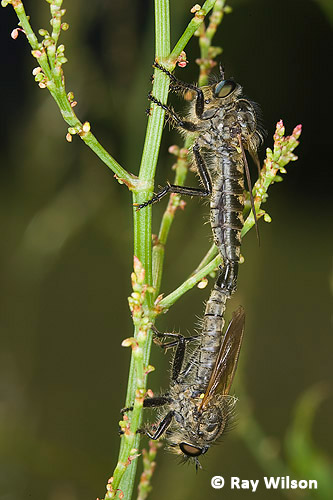
Copulating Robberflies |
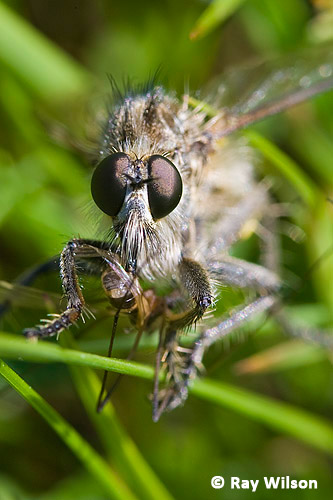 Fan-bristled Robberfly (Dysmachus trigonus) |
They are sun-loving insects and are primarily most active in hot, sunny conditions so it is not really of any surprise that they are represented by only 28 species in Britain out of the 7000+ species known worldwide, and most of those 28 are restricted to the south.
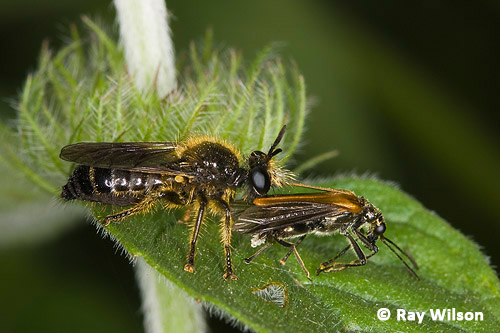
Robberfly with prey - Tazha, Bulgaria - June 2007
Most of the British robberflies adopt a hunting strategy similar to many fly-catching birds. i.e. they sit waiting for a victim to approach, then when it is within range it will dart out rapidly to capture it on the wing.
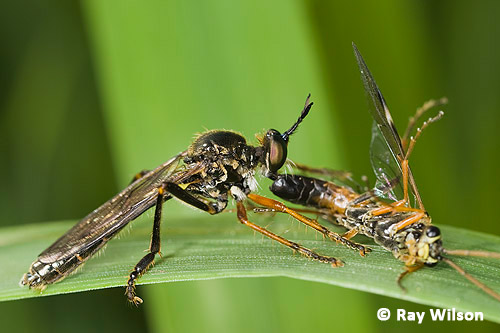
Common Red-legged Robberfly (Dioctria rufipes) - Cheshire, England - May 2009
Compared to most other robberflies, D. rufipes is quite sluggish. Their mainly Dipteran diet is usually supplemented with a sizable proportion of Hymenopteran prey, including parasitic wasps such as the victim photographed above.
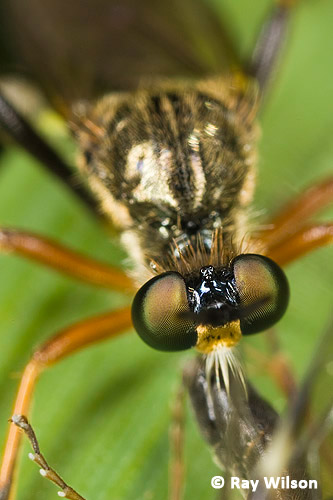
Common Red-legged Robberfly (Dioctria rufipes) - Gwynedd, Wales - May 2008
D. rufipes is the only species that can be consided to be widespread in northern England. Other species occur, but have a much more localised distributions north of the Mersey.

Robberfly eating a female scorpion fly (Panorpes sp.) - Trigrad, Bulgaria - June 2007
It is no coincidence that most of the photos on this page are of robberflies in the act of eating. Their alert nature and excellent eye-sight means that getting close enough for a decent photograph is usually extremely difficult. When they are distracted by consuming their prey, or mating, they make much easier photographic targets...
Dune Robberfly (Philonicus albiceps) - West Glamorgan, Wales - July 2011

Fan-bristled Robberfly (Dysmachus trigonus) - Anglesey, Wales - July 2008
Ray Wilson owns the copyright of all images on this site.
They may not be used or copied in any form without prior written permission.
raywilsonphotography@googlemail.com
